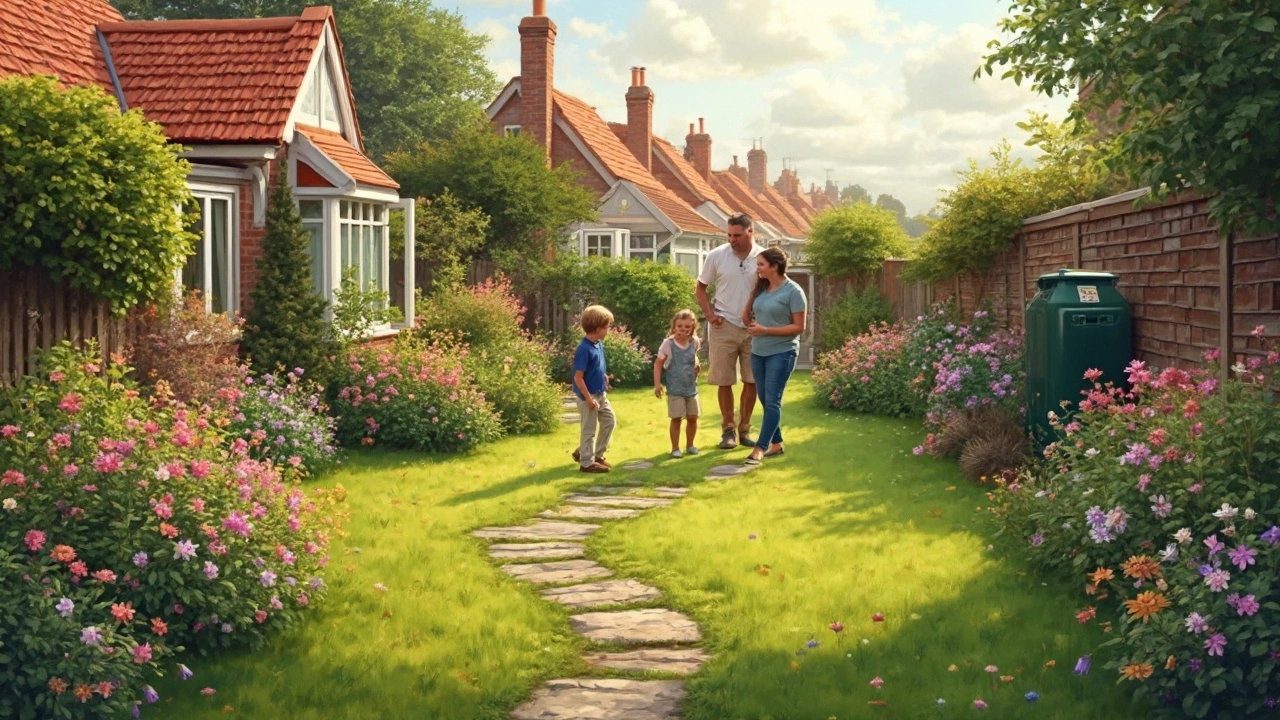This article digs into the smartest ways to landscape your yard without draining your wallet. You'll find clear advice on where to spend, where to save, and tricks that stretch your landscaping dollar. Get real tips for picking plants, reducing maintenance, and using materials that offer the best value. If you want a good-looking yard that’s easy on your budget, you’re in the right place. No hype, just practical ways to get the most from every landscaping buck.
Landscaping Tips That Actually Work for Any Garden
Want a garden that looks great without spending a fortune or hiring a pro? You’re in the right place. Below are no‑nonsense tips you can start using today, whether you have a tiny yard or a sprawling back garden.
Start With Healthy Soil
The secret to a lush lawn and thriving plants is healthy soil. Grab a garden fork and loosen the top six inches. Mix in a handful of compost per square metre – it improves drainage and feeds roots. If your soil feels heavy, sprinkle some sand and churn it in; if it’s sandy, add more organic matter. A quick soil test from a local garden centre tells you the pH level, so you know whether to add lime (to raise pH) or sulfur (to lower it).
Pick the Right Garden Furniture
Garden furniture can either protect your grass or damage it. Opt for legs with wide, rubber‑coated feet instead of sharp metal points. They spread the weight and keep turf from turning into brown spots. If you love a wooden patio set, treat it with a UV‑protective oil every spring – it stops cracking and reduces the chance of splinters getting into the soil.
When you’re not using the set, move it onto a patio slab or a portable rug. This simple habit stops the weight from compressing the grass roots and keeps the lawn level.
For a budget‑friendly option, repurpose old pallets into a DIY outdoor sofa. Sand them smooth, paint them with exterior‑grade paint, and add waterproof cushions. You get a stylish look and a furniture piece that sits lightly on the ground.
Water Smarter, Not Harder
Early morning watering is best – the water reaches the roots before the sun evaporates it. Install a soaker hose or drip‑irrigation system; they deliver water directly to the soil and cut waste by up to 50 % compared to a sprinkler.
Mulch your flower beds with bark chips or straw. Mulch locks in moisture, reduces weeds, and gives a neat finish. A layer about three inches thick does the trick.
Low‑Maintenance Plant Choices
If you’re short on time, pick native plants. They’re adapted to local weather, need less water, and resist pests naturally. In the UK, consider lavender, rosemary, or ornamental grasses for a Mediterranean feel that thrives on a bit of neglect.
Group plants with similar water needs together – this is called “hydrozoning”. It prevents over‑watering some while under‑watering others, saving both water and effort.
Quick Fixes for Common Problems
Brown patches? You probably stepped on the grass or it didn’t get enough nutrients. Reseed the area after loosening the soil and apply a light fertilizer. For weed invasions, pull them by hand when the soil is moist; the roots come out clean, and you avoid chemicals.
Cracks in hard‑scaped areas? Use a polymer‑filled concrete mix for a seamless repair that lasts. It bonds well and resists future cracking.
Finally, keep a garden journal. Jot down what you plant, when you water, and any issues you spot. Over time you’ll see patterns, and your garden will get easier to manage.
With these practical landscaping tips, you can boost curb appeal, protect your lawn, and enjoy an outdoor space that feels like an extension of your home. No fancy jargon, just simple steps you can start right now.
